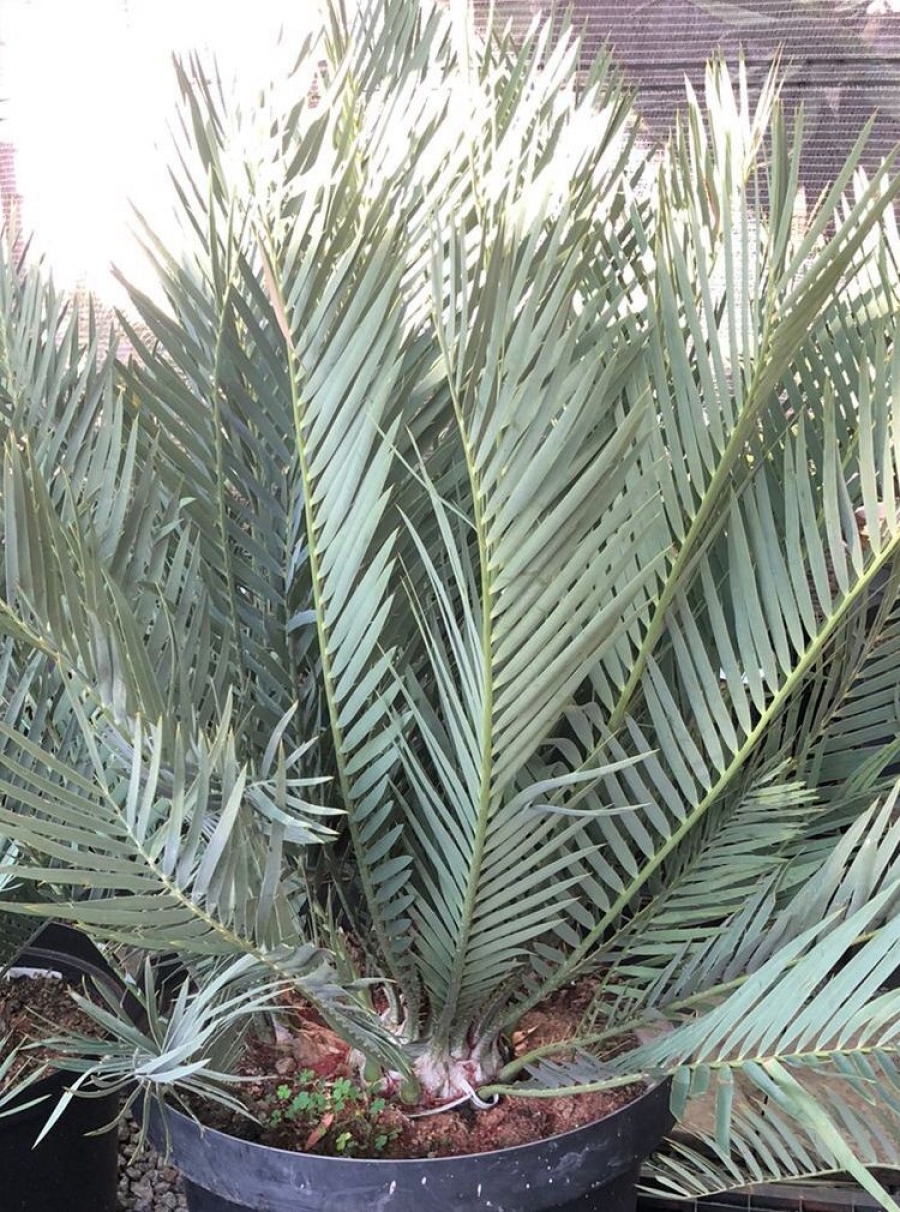| |||
| Division: Cycadophyta |
| Class: Cycadopsida |
| Order: Cycadales |
| Family: Zamiaceae |
| Genus: Encephalartos |
| Species: E. dyerianus |
Conservation Status: |

E. dyerianus
Lillie CycadE. dyerianus, also known as the Lillie Cycad or Lowveld Cycad, grows in open shrubland and grassland on slopes of a single low granite hill in the Limpopo Province, at an altitude of 700 meters.
The stem reaches 4 m in height to 60 cm in diameter. The leaves are long 140-170 cm, blue-matte silver colour, slightly inclined. The stem is straight and equipped with up to six pins. The leaves are 17-24 cm long and 13-18 mm wide. They are equipped with toothed edges and are inserted into the leaf forming angles of 45-80°. At the base of the leaf, the leaflets are reduced to thorns. The spine is normally straight and stiff, but can occur sometimes slightly twisted.
Male cones are ovoid blue-green or yellow of 30-50 cm in length and 9-12 cm in diameter, and female cones are ovoid blue-green or yellow of 30-60 cm in length for 10-20 cm in diameter.
The seeds are elongated, with size 40-45 mm for 25-30 mm, with a yellow or orange-brown colour.
Cultivation:
E. dyerianus is a handsome, undemanding and easily grown cycad, which grows in full sun. In coastal and inland areas, this species prefers to be in full sun, but can tolerate some shade. For desert areas, this species should be placed in partial sun or filtered light. This plant does need a soil that drains well, and does not do well with excessive moisture.
| full sun | blue-green | very low watering | fast growth | frost-hardy | uncommon |
E. dyerianus is a handsome, undemanding and easily grown cycad, which grows in full sun. In coastal and inland areas, this species prefers to be in full sun, but can tolerate some shade. For desert areas, this species should be placed in partial sun or filtered light. This plant does need a soil that drains well, and does not do well with excessive moisture.
Available E. dyerianus at Africa Cycads:
|
|
|



